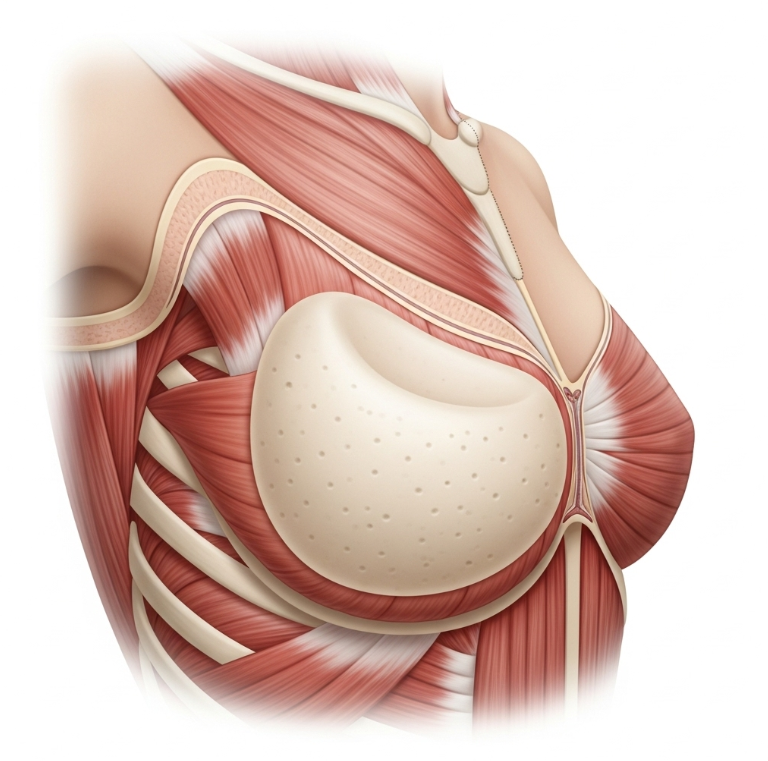Treatment Overview
Implant-Based Breast Reconstruction in Korea is a surgical procedure designed to restore breast shape and volume after mastectomy or breast implant removal using silicone or saline implants. This method is often chosen for patients seeking a quicker recovery and predictable volume restoration.
Korea is internationally recognized for advanced breast implant techniques, precise surgical planning, and aesthetically natural outcomes, making it a top destination for implant-based reconstruction.
Purpose & Benefits
The main goal of implant-based reconstruction is to recreate a natural-looking breast while maintaining symmetry and comfort.
Key benefits include:
- Immediate restoration of breast volume after mastectomy
- Predictable, customizable breast size and shape
- Minimally invasive compared to flap procedures
- Reduced donor site complications since no autologous tissue is used
- Can be combined with fat grafting for a more natural contour
- Improved self-esteem and body confidence
Ideal Candidates
Implant-based reconstruction is ideal for patients who:
- Have undergone mastectomy or breast implant removal
- Prefer quicker recovery compared to flap reconstruction
- Have sufficient chest tissue to cover the implant
- Seek predictable breast size and shape
- Are in good health and have realistic expectations
Possible Risks & Complications
Even in advanced Korean clinics, potential risks include:
- Capsular contracture (scar tissue around the implant)
- Implant rupture or leakage
- Infection or delayed wound healing
- Nipple or breast asymmetry
- Temporary or permanent changes in sensation
- Rare anesthesia-related complications
Surgical Techniques Used
Korean surgeons utilize modern techniques to ensure natural aesthetics and long-lasting results:
- Submuscular Placement: Implant placed under the chest muscle for a natural contour
- Prepectoral Placement: Implant placed over the muscle, often combined with acellular dermal matrices (ADM) for support
- Tissue Expansion: For patients with insufficient skin, a temporary expander stretches tissue before final implant placement
- Combination with Fat Grafting: Enhances breast contour and softens edges of the implant
- Scar Minimization Techniques: Strategic incision placement and advanced suturing to reduce visible scarring
Recovery & Aftercare
Recovery is closely monitored in Korea to ensure safety and optimal outcomes:
- Light activities can resume in 3–5 days
- Swelling and bruising usually subside in 2–3 weeks
- Compression bras recommended for 4–6 weeks
- Avoid strenuous exercise and heavy lifting for 4–6 weeks
- Regular follow-up visits to monitor implant position, symmetry, and healing
Results & Longevity
- Immediate restoration of breast volume and shape
- Long-lasting results, especially with high-quality implants and proper post-op care
- Korean surgeons focus on natural appearance, symmetry, and soft contour
- Can be combined with secondary fat grafting or revision procedures for enhanced results
Treatment Process in Korea
Korea is a leading destination for implant-based reconstruction due to precision, experience, and patient-centered care:
- Consultation & Assessment: Evaluate breast and chest wall, discuss implant type, size, and reconstruction goals
- Customized Surgical Plan: Decide between submuscular or prepectoral placement, tissue expansion if needed, and optional fat grafting
- Surgical Procedure: Implant inserted under general anesthesia, with careful placement for symmetry
- Post-Operative Monitoring: Compression garments, wound care, and pain management
- Follow-Up Appointments: Monitor implant position, breast contour, and healing
- Medical Tourism Support: English-speaking coordinators, recovery accommodations, and guidance for international patients
- Combination Procedures: Optional nipple reconstruction or fat grafting for improved aesthetics
Cost Range
The cost of implant-based breast reconstruction in Korea depends on implant type, surgical complexity, and combination procedures:
- Standard Implant-Based Reconstruction: ₩8,000,000 – ₩15,000,000 KRW
(Approx. $6,100 – $11,500 USD) - With Tissue Expansion: ₩10,000,000 – ₩18,000,000 KRW
(Approx. $7,600 – $13,800 USD) - With Fat Grafting or Nipple Reconstruction: ₩15,000,000 – ₩25,000,000 KRW
(Approx. $11,500 – $19,000 USD)
Additional Costs:
- Pre-operative tests and imaging: ₩150,000 – ₩500,000 KRW ($115 – $380 USD)
- Compression garments and medications: ₩150,000 – ₩400,000 KRW ($115 – $300 USD)
- Follow-up consultations: ₩50,000 – ₩200,000 KRW ($40 – $150 USD)
Popular Clinics
Some of the top Korean clinics for implant-based breast reconstruction include:
- Banobagi Plastic Surgery Clinic – precise implant placement and aesthetic contouring
- JK Plastic Surgery Center – internationally accredited, expert in post-mastectomy reconstruction
- ID Hospital Seoul – advanced tissue expansion and implant-based reconstruction techniques
- View Plastic Surgery Hospital – emphasizes symmetry and natural breast shape
- Regen Plastic Surgery – combines implant reconstruction with fat grafting for optimal results




